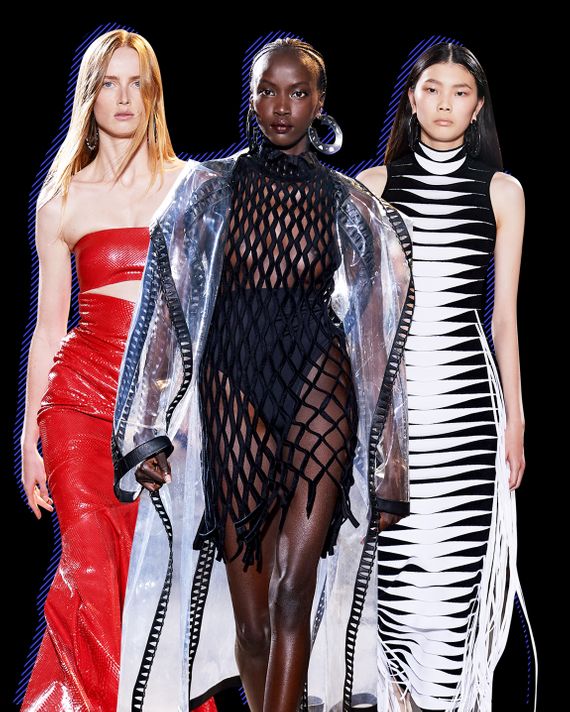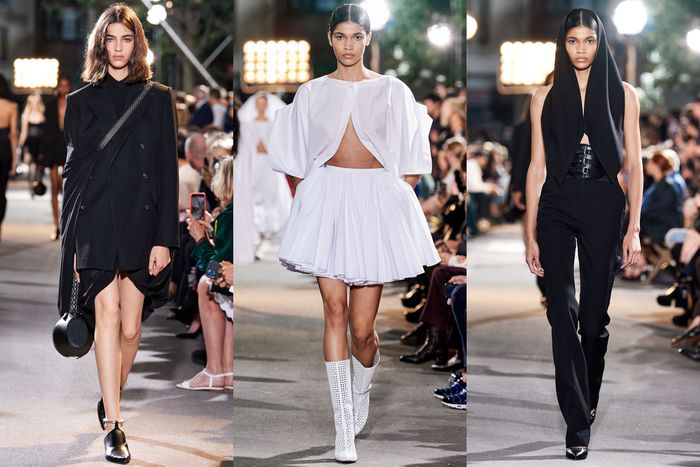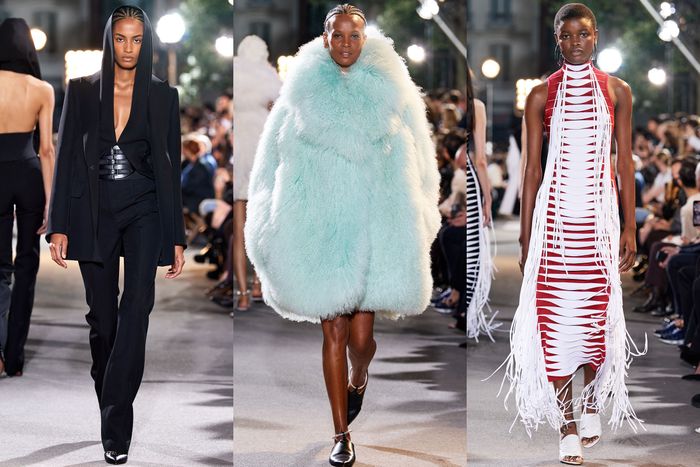
The story of how the diminutive Tunisian-born designer Azzedine Alaïa became a giant in French fashion — one of the most original and influential in all of fashion — is well known. But here is a little-known fact to savor: Alaïa hit Paris in 1956, around the age of 20, but didn’t have his first runway show until 1982. And not in Paris, but at Bergdorf Goodman in New York. Alaïa’s black sensuous clothes had first been discovered by some French editors, among them Carlyne Cerf de Dudzeele, but it was Bill Cunningham’s photos, taken of the editors outside the Paris shows, that set off the explosion. The reason Bergdorf could claim him is the reason American retailers were supreme: People religiously shopped in stores. Just as important, a designer had time to develop his skills. That is no longer the case.
Carla Sozzani told me this story on Sunday night in the cobblestoned courtyard of Alaïa’s maison. A former editor herself, Sozzani is a founder of the store Corso Como and was close to Alaïa. Since his death in 2017, she has run the foundation that owns his massive archive as well as the building that housed his studio, ateliers, and living quarters. She and the curator Olivier Saillard regularly stage exhibitions of his work in the cavernous wrought-iron hall that once served as his show space. A selection of Alaïa’s work from the ’80s is currently on display along with photographs by Peter Lindbergh.
Of course, I didn’t come to Paris to view Alaïa’s old clothes. I came to see the new designs of his successor, Pieter Mulier, and also to see the fall haute couture collections — the first live shows in more than a year. Successions are a big deal in fashion, perhaps because since the mid-’90s, when groups like LVMH began buying up couture houses, they’ve been the pattern. Find a gifted young talent to perk up your dusty name. In recent years, a social-media presence has been a plus. Look at the huge success of Virgil Abloh, the men’s designer at Louis Vuitton, who just opened a boutique near the Place Vendôme for his Off-White label and on Sunday staged a lively show with a performance by M.I.A. It wasn’t haute couture, but it was certainly a bid to appear more grown up and polished, and it mostly worked, thanks to the minimalist electric-colored sheaths with a rigid flap down the sides or a kind of built-in bustle.
The Alaïa brand is utterly different. For a designer, it is both a dream job and a nightmare, because his forms, his silhouette, were so individual, the result of decades of refinement. Do you simply reproduce the strong, slightly rounded shoulders of his coats, their nipped waists? What about his sensuous knitwear, including his famous mummy and so-called bandage dresses that caused such a sensation in the ’80s and ’90s? And how do you capture that subtle, magical sex appeal that piped through all his work, which the late writer Ingrid Sischy probably summed up best when she called it “Follow me, garçon”?
In my view, Mulier’s debut collection felt more strategic than emotional. It was held in the street in front of the house, in part to satisfy COVID rules — you don’t need to wear masks outdoors — and in part to project a democratic mood. (It’s also true that the Alaïa Foundation, as owner of the building, didn’t grant Richemont, which owns the label, access to the wrought-iron show space, though that could change in the future.) Mulier said he was struck by the “democracy” of Alaïa’s collections, that he designed for women of all ages and body types and played host at his famous kitchen lunches and dinners to an eclectic range of individuals, from politicians to seamstresses.
Mulier also sensed, he told me, that many young people don’t know Alaïa. As he put it, “They know the image but not the work.” He didn’t look at the archive, but after he was hired, in February, he began buying vintage pieces to add to his visual knowledge of Alaïa. He also borrowed from the foundation the original sales books from the Alaïa Beverly Hills boutique, back in its ’80s heyday, to see what people were buying. “They inspired me so much,” he said. Again, it was the democratic element.
I must say, though, the scene on Sunday night on the Rue de Moussy was strange, for various reasons. In a way, nothing had changed — familiar-looking people were once again gathering for a show. But in another way, everything had changed. We were back in the world but at the same time groping our way toward it. The old jocularity, the easy preshow familiarity, was not quite there. At least the kissing was gone, thank God.
Perhaps in that same vein, I sensed that people wanted to love Mulier’s clothes — the new crisp version of the mummy dress with streamers, the fluffy pastel coats, the slinky dresses with hoods à la Grace Jones (an Alaïa client) — but didn’t quite love them. To be fair, he was showing his clothes to the toughest bunch — the editors, stylists, designers, and friends who knew not only the man but the clothes. Inside and out.
I think, on the whole, Mulier, who spent roughly 15 years as Raf Simons’s right hand, did a fine job. He met his brief, which was to introduce Alaïa to a new audience, one shaped by the fast, sharp, simplified imagery of the digital age. This was a reductive view of Alaïa, potentially shaped for e-commerce. The Alaïa company only has a few of its own retail outlets, in Paris and London; and some of its retail partners, notably Barneys, are out of business. It’s a new world indeed.
As much as I enjoyed being back on familiar ground — I spent a lot of happy evenings in Alaïa’s kitchen and watching him work in his studio, a cat stretched out on his table — it was also disconcerting. I wondered if it was a good idea to host a show, and a dinner, just steps from Alaïa’s own work, the incredible mid-’80s coats on display in the exhibit, the perfectly cut knit minidresses. For it was no accident that these things looked perfect. Alaïa spent hours and hours, sometimes weeks, getting the fit, the line, just right.
And that’s becoming less and less possible today in high fashion. Alaïa knew that and fought against it, making far less money than other luxury brands in order to have the freedom to design.
I brought up that telling difference of the clothes in the exhibit with Mulier, and he agreed but said, “It took him 14, 15, 16 months to make a jacket, and we don’t live in that world anymore.” True, but many of Alaïa’s competitors do still worry about the perfection of the subtle details. And for that price, customers expect it.
Article From & Read More ( How Do You Follow a Fashion Legend? - The Cut )https://ift.tt/3dNLHvl
Fashion
Bagikan Berita Ini
















0 Response to "How Do You Follow a Fashion Legend? - The Cut"
Post a Comment